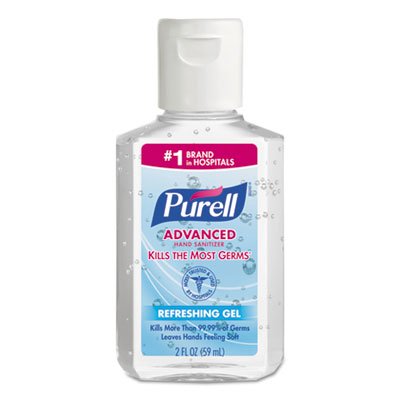You don’t think airlines can just provide hand sanitizer to passengers, do you? On Tuesday the FAA wrote to American Airlines granting permission, and the letter they sent (.pdf) offers a window into process the airline had to go to in order to secure the government’s blessing.
Tuesday’s correspondence came from the FAA’s American Airlines Certificate Management Office in Irving, Texas. Imagine having a local office of a federal agency dedicated to your business, with its own letterhead.

American wanted permission to provide “personal use quantities of hand sanitizer gel and sanitizing wipes to customers prior to boarding and/or distributed during flight.” That means there would be hand sanitizer on the aircraft, and that falls within the FAA’s jurisdiction.
Before writing for permission, a team from American Airlines held two separate meetings with FAA inspectors, from two separate FAA offices – the airline’s direct regulators in their certificate management office, and also with the Office of Hazardous Materials Safety. The purpose of these meetings was “to discuss the 14 CFR part 5 required safety risk assessment” required to have hand sanitizer on board.
Passengers and crew are permitted to carry hand sanitizer, consistent with 49 CFR §175.10. And shippers can carry hand sanitizer, consistent with 49 CFR §173.150(g). For the airline to carry and distribute it, though, 49 CFR §175.8 (a)(4) requires permission of the Administrator of the FAA.
To obtain this permission American committed “that it will not transport case quantities of hand sanitizer for replacement in the cabin” however that they did plan to double provision flights to outstations so that they’d have some stocked for the return segment.

They further certified that they would board and distribute quantities that met the exceptions in the CFR sections noted above, and that they would disperse the sanitizer packages across multiple catering carts to “minimize concentration in any one location.”
The FAA issued a finding that American’s proffered plan to offer hand sanitizer to passengers “meets conditions for FAA approval allowed in 49 CFR §175.8 (a)(4).” Even so, the specific products that the airline sources for use must be “approved by the AA Chemical Review Board (CRB) to meet the above CFR limitations and will be tracked on an internal reference list.”
Furthermore, permission is contingent on “mitigations and procedures included in the AA RWM ‘Corp SMS and Team – 200512- 01 / Hand Sanitizer in Amenity Kits and Snack Bags’ [being] “completed and complied with.” Any deviations require advance coordination with the dedicated FAA Certificate Management Office for American Airlines “prior to any further flights that provide personal use quantities of hand sanitizer gel and sanitizing wipes to customers.”
Remember this the next time you complain that airlines ‘were deregulated.’


Hand sanitizer can explode, and has been in peoples cars. I think the fact that we regulate explosives on airliners is…fine.
United has been hading out individual Purell wipes.
IATA and ICAO provided guidance on this process months ago. Waiting this long to take action doesn’t paint them in a good light. Our regulator granted these approvals in February.
This seems strange… Delta include hand sanitizer in their business class amenity kits for years…
Hand sanitizer must have 60% alcohol to be effective. At that level, it is considered a “hazmat” or “dangerous goods”. Carrying those types of materials has never been “de-regulated”. Federal and International laws have always regulated those materials for a long time.
Correct me if I’m wrong, but I’ve been on a few flights over the years (AA and other airlines) in which the aircraft didn’t have potable water for hand washing. A bottle of hand sanitizer was generally placed in the lav in these situations, which makes me believe it was always on the aircraft.
Presumably this is because the alcohol gel could be ignited. Though the risk seems pretty small. Having the little bottles (and I’m guessing these will be the tiny size, not even the airport giftshop 2 oz size) the ‘concentrated risk’ seems small.
As to amenity kits, the sanitizer is already in separate kits, not together in a case. And J kits go to, what, a few percent of boarded pax. Even j-heavy formats it’s maybe 40 people total.
While I understand the reason for the caution, you can now bring hand sanitizer aboard yourself anyway, so the point becomes rather moot.
I’m assuming it’s the concentration of hand sanitizers together that is the explosive risk.
@Daniel – I’d think it’s more a matter of quantity than concentration. The stuff really is flammable (think 151 proof alcohol, give or take). In theory some group could combine separate bottles and start a sizeable fire. Between air masks and the cockpit being locked I’m not sure they could do much more than that, though, so unless 30 to life in the Federal Penn is their goal it would seem a bit counterproductive.
Thank God someone is overseeing those airline clowns. They would probably think it would be OK to store a box with a week worth of and sanitizing gel on an overhead, waiting for something to ignite it.
Without the FAA the aviation death rate would be horrendous, similar to deregulated Africa, all in the name of cutting costs.
Delta has long had little bottles of sanitizers in the Delta One business class amenities kits
>>remember this the next time you complain that airlines were deregulated.<<
have you no shame, gary? not even a teeny tiny bit? you always gotta make this political, doncha?
(the rest of the article was fine. it's your unfounded takeaway conclusion that indicates a political agenda, which you always insist you do not have.)